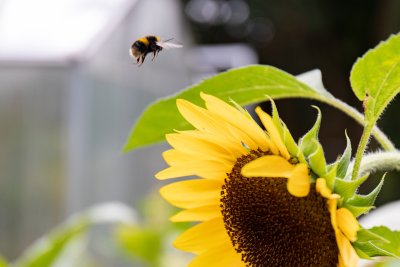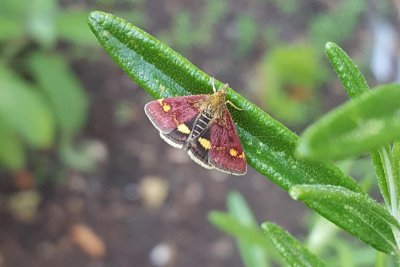Growing For Nature
How we are supporting London’s urban farms and gardens to rewild the city.

Urban growing spaces nourish communities and contribute to health and wellbeing, but if you look closer these sites are humming with wildlife too. It’s time we took community gardens seriously as hubs for birds, bats, beetles and many other species.
Supported by funding from the Mayor of London and City Bridge Foundation, Capital Growths newest initiative “Growing for Nature” aims to highlight the mutual benefits of growing spaces to animals and humans. Through citizen science, biodiversity toolkits, and training programmes, the project will empower gardens and farms to create thriving habitats while cultivating food.
In April 2024 we worked with the GLAs London Nature Recovery Scheme to gain a clearer understanding of how food growers were already engaging with wildlife monitoring in the city. We invited peri-urban farms and community growing spaces to survey their sites. This research documented biodiversity, habitat types, cultivation methods, and existing biodiversity surveys being used at these locations.
What wildlife friendly habits already exist in urban growing areas?
In total, 142 community growing spaces participated, illustrating the excellent work happening across London from hedgehog boxes to wildflower meadows. Almost of the community growing spaces we surveyed had a large array of wildlife habits. The two most common were compost heaps and pollinator friendly plants with orchard and fruit trees coming in second. Community growing spaces are also doing incredible work to reduce pesticides with 99% of surveyed sites growing completely organically.
Are farms tracking and supporting wildlife?
We also had input from 21 farms from around Greater London. Farms also provided wildlife friendly habitats, the most frequent being ponds and wildflower meadows (48% each), hedgerow management or new hedge planting (38%) and insect boxes and bug hotels (33%). Whilst farms had a lower rate of organic growing (38%), every single farmer expressed an interest in implementing wildlife monitoring, reflecting commitment and enthusiasm for greener practices.

How can we move from enthusiasm to action?
Despite widespread enthusiasm for biodiversity monitoring among growers, only 18% regularly engage in citizen science. To overcome the gap between interest and action, participants requested access to expert guidance and simplified monitoring tools. One farmer noted that there is “no systematic way to record” making it too time consuming.
With GLA backing, we are planning on expanding our Growing For Nature Campaign to help farms, gardens and allotments around London become wildlife hubs. We'll be training up Nature Champions, putting together practical toolkits and creating a new monitoring hub (built with GiGL) that will make surveying simpler than ever.
If you want to get involved and join our efforts to make London even more wildlife friendly sign up to our mailing list or email capitalgrowth@sustainweb.org. To find our more about the results from our survey, check out our biodiversity report for community gardens and farms.
Support our work
Your donation will help communities grow more food in gardens across London.
Capital Growth is a project of Sustain: the alliance for better food and farming.




